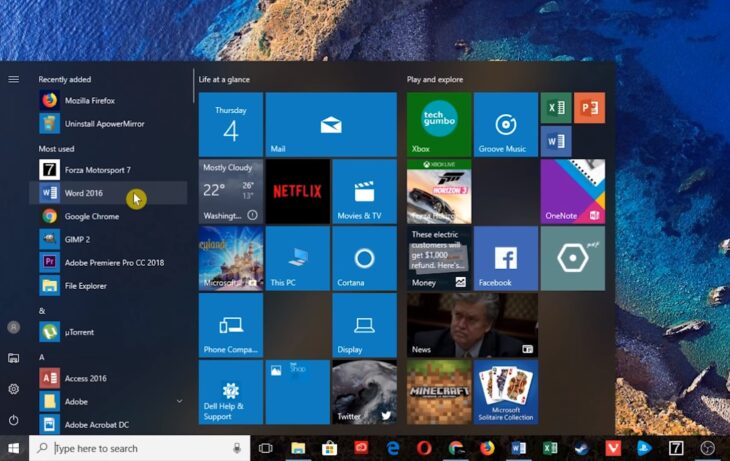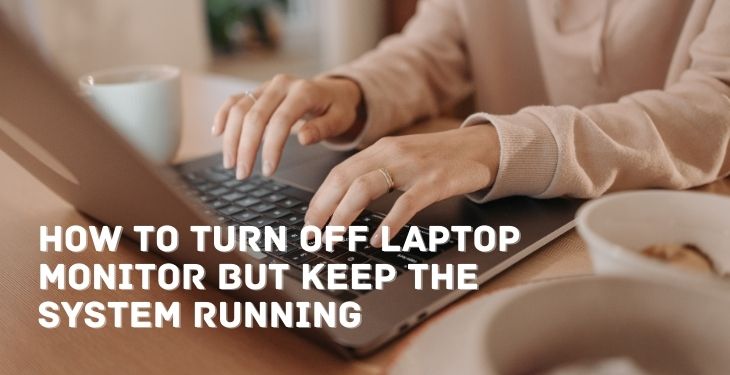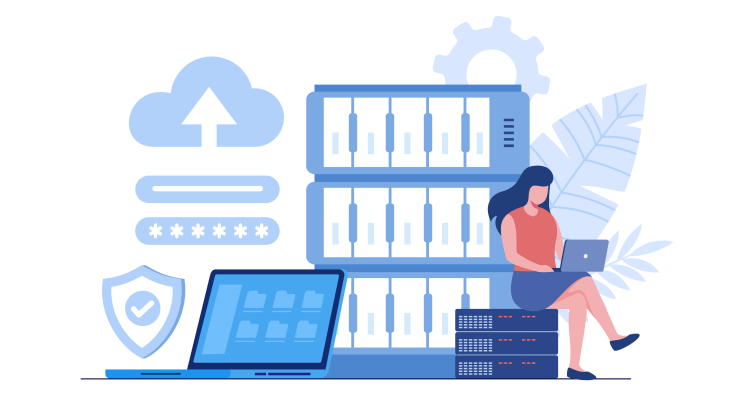We’ve all been there. You’re working on your laptop, and suddenly you need to step away. Maybe it’s a quick bathroom break, a sudden meeting with the boss, or just a moment to stretch your legs. But leaving your laptop screen on not only consumes power but might also expose sensitive information to prying eyes.
So, how do you ensure privacy and save energy without shutting down your entire system? The answer lies in turning off your laptop monitor while keeping the system running.
This technique not only conserves energy but also ensures that your data remains private. Plus, it’s a great way to give your eyes a break from the screen without interrupting your workflow.
Fun Fact: Did you know that turning off your laptop monitor can save up to 20% of your laptop’s battery life over an hour?
Preparing Your Laptop
Before exploring the methods, it’s crucial to set the stage right.
- First, check if your system supports this feature. Most modern laptops do, but it’s always good to be sure.
- Secondly, if you’re not plugged into a power source, ensure your laptop has enough battery life. You wouldn’t want it to shut down unexpectedly.
- Lastly, close any applications you don’t need and save all your work. It’s always better to be safe than sorry.
Pro Tip: Always keep your laptop’s drivers updated. This not only ensures better performance but can also introduce new features and shortcuts.
Using Keyboard Shortcuts
Keyboard shortcuts are a quick and efficient way to navigate and control your laptop. Here’s how you can turn off your monitor using them:
For Mac Users
Mac makes it simple. Use the built-in keyboard shortcut, Control + Shift + Eject, to turn off the monitor without putting the computer to sleep. If you wish to turn off the monitor and put your Mac to sleep simultaneously, use the Option + Command + Eject combination.
For Windows Users
Windows, unfortunately, doesn’t offer a direct shortcut to turn off the monitor. However, if you want to lock your PC quickly, press the Windows + L key. This will keep the monitor on but hide your activities. For turning off the monitor, you might need to rely on third-party software or adjust power settings.
For Linux Users
The shortcuts can vary based on the distribution and desktop environment. However, a common method is to use the combination of Ctrl + Alt + L to lock the screen.
Fun Fact: The original concept of keyboard shortcuts dates back to the early computer days when they were introduced to speed up tasks and improve efficiency.
Adjusting Power Settings
Every operating system provides power settings that allow you to customize how your laptop behaves. By tweaking these settings, you can ensure that your monitor turns off while the system remains active.
Windows
Go to Control Panel > Hardware and Sound > Power Options.
Here, you can set the time after which the display turns off when your laptop is idle.
Mac
Head to System Preferences > Energy Saver.
Adjust the slider for “Turn display off after” to your desired time.
Linux
The process varies with the distribution.
Generally, you can find display and power settings in the system settings or control center.
Pro Tip: Regularly check for system updates. Manufacturers often release updates that optimize power settings for better performance and battery life.
Using Third-Party Software

Sometimes, the built-in options just don’t cut it, especially if you’re looking for more advanced control over your laptop’s monitor. That’s where third-party software comes into play. These programs offer a range of features, from simple one-click solutions to more complex settings that can be customized to your liking.
- Turn Off Monitor: This software allows you to assign a specific key combination to turn off your monitor instantly. It’s lightweight and easy to use.
- BlackTop: This tool is even lighter than Turn Off Monitor and comes with a pre-assigned keyboard shortcut, Ctrl + Alt + B, to turn off the monitor.
- ScreenOff: Another popular option, ScreenOff lets you turn off your monitor with a simple double-click on its desktop icon.
- Advantages and Drawbacks: While these tools offer quick and easy solutions, they come with their own set of risks. Always download software from trusted sources and keep your antivirus software updated.
Pro Tip: Before downloading any third-party software, always read user reviews and check for any security issues reported by other users.
Keeping the System Active
So, you’ve turned off your monitor, but how do you ensure that your laptop stays awake? Here are some tips:
- Change Lid Settings: In your power settings, you can configure your laptop to “Do Nothing” when the lid is closed. This way, you can close your laptop without putting it to sleep.
- Disable Sleep Mode: Make sure to set the “Put the computer to Sleep” option to “Never” in your power settings. This ensures that your laptop won’t go into sleep mode, which would interrupt any ongoing tasks.
- Important Considerations: Keep in mind that keeping your laptop running for extended periods can lead to overheating. Make sure your laptop is on a hard, flat surface to ensure proper ventilation.
Troubleshooting Common Issues
Sometimes things don’t go as planned. Here are some common issues you might encounter:
- Monitor Won’t Turn Off: Check your power settings and ensure that they are configured correctly.
- System Goes to Sleep: Make sure the sleep settings are disabled or set to a longer duration.
- Third-Party Software Issues: If you’re using third-party software, make sure it’s updated and compatible with your operating system.
Safety and Energy Efficiency
Turning off your laptop monitor is not just about convenience; it’s also about being responsible. By doing so, you’re reducing your carbon footprint and contributing to energy conservation.
Pro Tip: Use energy-efficient settings on your laptop to further reduce energy consumption.
FAQ
Can I use these methods on any laptop model?
While most modern laptops support these methods, always check your model’s specifications and user manual for any unique features or limitations.
Is there a risk of screen burn-in if I frequently turn off and on my monitor?
Modern LCD and OLED screens have significantly reduced the risk of burn-in. However, it’s always good to vary on-screen content and use screen savers.
Do these methods affect the lifespan of my laptop’s monitor?
Regularly turning off your monitor can actually extend its lifespan by reducing the hours of usage.
Are there mobile apps that can control my laptop’s monitor settings remotely?
Yes, several remote desktop applications allow you to control your laptop’s settings, including the monitor, from your mobile device.
Conclusion
Turning off your laptop monitor while keeping the system running offers a host of benefits, from saving power to ensuring privacy. Whether you’re a Windows, Mac, or Linux user, there’s a method that will work for you.
So go ahead, give your eyes—and the planet—a break. You’ve got options, and now you know how to use them.


